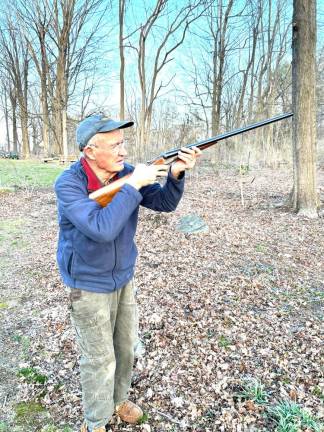
I’m an upland bird hunter. I keep in practice by shooting pigeons. My son tosses them into the air for me. I miss some of the ones that fly directly over my head. But when I center them with my 12-gauge Ithaca, it feels great to blow them apart.
These are clay pigeons — AKA “skeet.” For target practice, clay pigeons have lots of advantages over live ones. You don’t have to catch, raise, feed, or transport them. And you don’t have to become a pariah for engaging in animal cruelty.
England banned live pigeon shoots in 1921, Monaco in 1966, Italy in 1970, Portugal in 2021, Spain in 2023. But they’re ongoing in the U.S.
Pennsylvania is one of the first states to pass a robust anti-cruelty statute. But in the Keystone State, as in many others, live pigeon shoots are still legal. This will change if a bill that cleared the state House April 29 is enacted to law.
Workers (often children) grab wounded birds, make no effort to dispatch them, then throw them into garbage cans where they take hours or days to die.
How many states permit live pigeon shoots? “No telling,” explains Steve Hindi, President of Showing Animals Respect and Kindness (SHARK), “because even in states that specifically outlaw them they happen secretly and with impunity.”
When possible, SHARK records the shooting with drones legally flown under Federal Aviation Administration certification (Google the videos). SHARK drones are routinely blasted out of the sky by pigeon shooters who bring rifles specifically for that purpose because the drones fly above shotgun range. A $15,000 drone was shot down at one Pennsylvania event.
Lead is a neurotoxin. Only two ingested shotgun pellets can fatally poison a hawk, eagle, or vulture. Lead pellets also poison foxes, coyotes, fishers, bobcats, cougars, badgers, raccoons, and opossums. Many wounded pigeons fly too far for workers to collect. Any bird flapping on the ground is a dinner invitation for predators. Raptors and vultures poisoned by consuming lead pellets droop their heads, struggle to breathe, and convulse.
The Delaware River Keeper Network unsuccessfully sued the Philadelphia Gun Club for repeated Clean Water Act violations in which it polluted the river with lead shot, plastic shell waddings, and pigeon carcasses. “I’ve had the pellets rain down on me and my volunteers,” says Delaware River Keeper Maya van Rossum.
Some fair-chase hunters legally shoot and eat pigeons in the wild. I’m not one of them. I don’t object. I’m just spooked by the diseases and ectoparasites pigeons carry and spread to humans and wildlife — bird flu, psittacosis, histoplasmosis, cryptococcosis, e. coli, salmonellosis, bedbugs, pigeon ticks, and red mites, to mention a few.
If you can push past the pathogen/parasite issue, pigeons make fine table fare. Ethical hunters eat what they kill. But pigeons killed at live pigeon shoots rot or get eaten by scavengers.
My fellow hunters sit mute while slobs trash our reputation. It grieves me that the only objections to live pigeon shoots issue from the animal rights/wellness community. Not a peep from the National Wildlife Federation, the Theodore Roosevelt Conservation Partnership, Backcountry Hunters and Anglers, or any other outfit promoting and defending fair-chase hunting.
“There is nothing ethical or sporting about close-range shooting of mechanically launched, dehydrated and disoriented birds,” declares Natalie Ahwesh, Pennsylvania director of Animal Wellness Action. “The essence of what hunters consider ‘ethical hunting’ lies in pursuing a fair challenge in harmony with nature, which is entirely absent in this heinous practice.”
This year Pennsylvania has a chance to shed shame with House Bill 1475, “An Act amending Title 18 (Crimes and Offenses) of the Pennsylvania Consolidated Statutes, in cruelty to animals, further providing for definitions and providing for the offense of the use of live pigeons for targets.”
Ted Williams, a lifelong hunter, is a former information officer for the Massachusetts Division of Fisheries and Wildlife.